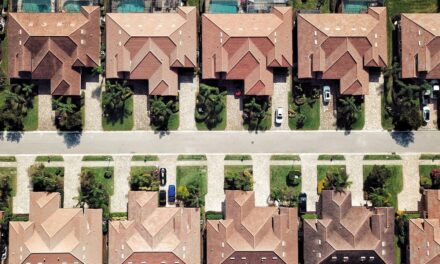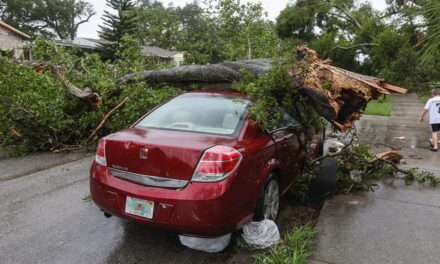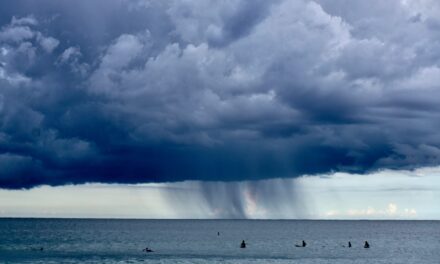When it comes to weather, there are certainly some natural disasters that seem to happen far more in some places than they do in others. Sinkholes are a mystery to many, and there is a surprisingly large amount of them in the city of Spring Hill, Florida. So let’s find out: Why does Spring Hill, Florida have so many sinkholes?
The reason why there are so many sinkholes in Spring Hill, Florida has so many sinkholes is because the ground underneath the city is made mostly of limestone. Acidic water drains down through the porous stone, weakening the ground. As well, flooding and hurricanes increase the water’s acidity, speeding up the erosion process.
In this article, we are going to explain in detail why Spring Hill, Florida has so many sinkholes, as well as how this city compares to other cities in Florida and the country. So keep reading; you are going to be a sinkhole expert in no time.
Why Do Sinkholes Happen?
Before we dig into why sinkholes are so common in Spring Hill, it’s important to understand exactly what sinkholes are and why they happen in general.
A sinkhole is a depression in the earth due to a collapse under the surface, i.e. when limestone bedrock is dissolved by groundwater. Sinkholes can be anything from a small pit to a giant cavity, and they can be extremely dangerous.
In general, Florida has more sinkholes than almost any other state because the entire state is underlain with limestone, which is extremely porous and, therefore, allows a great deal of groundwater through which erodes the limestone to nothing.
Why is Spring Hill Known for Sinkholes?
Even compared to the rest of Florida, which is quite well known for sinkholes, Spring Hill is almost famous for its sinkholes. Spring Hill is located in Hernando County, which has received the nickname “Sinkhole Alley” because of the mass number of sinkholes the area has experienced over the past century.
These days, Spring Hill is known for sinkholes because, in 2014, the city experienced one of the biggest sinkholes the state had ever seen. The incredible sinkhole spanned 120 feet across and 30 feet deep. The sinkhole swallowed an entire neighborhood street, but luckily, no one was harmed.
But this sinkhole was just one of many: 10 sinkholes greater than 80 feet in diameter hit Spring Hill, Florida, between 1947 and 2008, and 6,106 sinkholes were reported from 2000-2013 in Hernando County, where Spring Hill is located. The bottom line is that Spring Hill ranks #1 in the entire country for sinkholes!
So, now that we understand why sinkholes happen and why Spring Hill is known for sinkholes, let’s find out why.
Why Does Spring Hill, Florida Have So Many Sinkholes?
Spring Hill, Florida was built on limestone and weak soil, which has directly led to the city’s incredible amount of sinkholes over the years.
However, there are certain factors that have increased these numbers, such as flooding, hurricanes, and tropical storms. During the rainy season or natural disasters, the limestone dissolves continuously as acidic water drains down through its porous structure.
As the water continues to move through the limestone, it becomes even more acidic, which speeds up the erosion to a ridiculous rate, causing large and extremely dangerous sinkholes.
Because sinkholes in Spring Hill happen due to the ground underneath the town, there is truly nothing to be done to prevent them. Spring Hill will continue to experience sinkholes during the rainy season and if there are extreme tropical storms or hurricanes nearby.
How To Notice a Sinkhole Before It Happens
For those of you who live in Spring Hill or other towns in Sinkhole Valley, it’s important to understand that while you can’t prevent a natural sinkhole, you can keep a lookout for signs that one is on the way.
Here are a few signs that most likely mean that the limestone under the ground is weakening:
- Cracks in the foundation
- Depressions in the yard.
- Pooling of water by the foundation.
- Sagging floors.
- Fresh exposure of roots or fence posts.
- Cracking of floors or walls.
- Fresh cracks in tar or pavement.
Unfortunately, sinkholes are simply a part of the Spring Hill landscape, and although local authorities are trying to spread knowledge on sinkholes and how important it is to fix depressions before they damage homes and neighborhoods, it seems there is no real way to avoid these dangerous natural disasters.
The Bottom Line
So, why does Spring Hill, Florida have so many sinkholes? It is because the city is built on limestone and weak ground, which erodes due to acidic groundwater, causing the earth to cave in on itself.
Hopefully, even though you can’t prevent them, you now understand exactly what these sinkholes are and why they happen in Spring Hill, as well as the rest of Sinkhole Alley in Florida.





